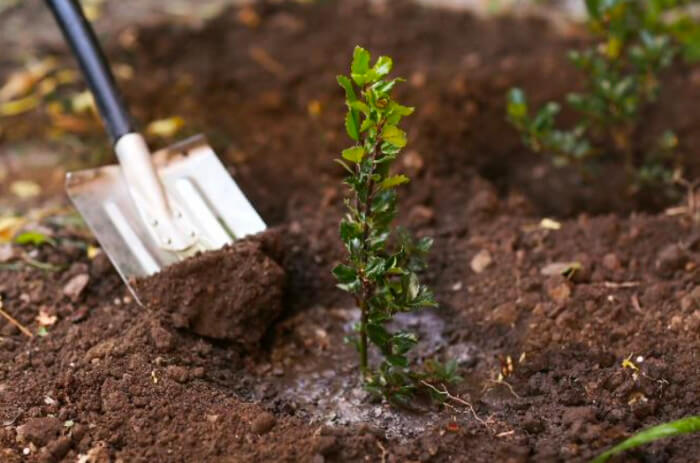
You just planted a beautiful new tree in your yard. Congratulations! With the right care and maintenance, your tree will thrive for years to come. Establishing a newly planted tree correctly is crucial for both its initial survival and long-term health. In this blog post, we’ll walk through the key things you need to do to ensure your new tree becomes well-established.
Water Thoroughly After Planting
The first step is watering your tree immediately after planting. When a tree is first planted, its roots are not anchored in the soil and able to absorb moisture and nutrients. It’s critical to thoroughly water the root ball and surrounding soil right after planting. This helps moisten the roots and settle the soil around them. For the first few weeks after planting, you’ll want to monitor soil moisture and water your tree whenever the top few inches of soil become dry. You can follow Tree Work Now’s recommended watering schedule to ensure your new tree is receiving the proper water. For the first 3 weeks, you should be watering daily. Then, for 3 months you should water every other day. Lastly, for the first 2 years watering weekly is what we recommend.
Apply Mulch Around the Tree
Cover the soil around your newly planted tree with 2–4 inches of organic mulch material such as shredded wood chips, bark pieces, leaves, straw, or compost. Make sure to spread the mulch out over the entire root zone of the tree in a ring but leave several inches of space open directly around the trunk. The mulch serves many important functions for establishing trees. First, it acts as a protective barrier to hold in soil moisture and humidity while preventing rapid evaporation from sun and wind exposure. This significantly reduces the water needs of the tree. Second, the mulch layer blocks weed growth which competes with the tree for water and nutrients. Third, it keeps the soil temperature moderated against extreme cold and heat. Fourth, as the organic mulch decomposes over time, it adds beneficial organic matter and nutrients into the soil. Reapply a fresh layer of mulch around your tree annually to maintain these benefits. Keeping the area directly at the trunk clear prevents moisture buildup and decay issues. Proper mulching techniques are critical for growing healthy, vigorous trees.
Don’t Fertilize at Planting
It is highly recommended to avoid fertilizing your new tree at the actual time of planting. Applying fertilizer salts and chemicals to the root zone of an establishing tree can potentially burn and damage the young tender feeder roots as they grow out into the soil. This damage can setback root development substantially. Instead, wait until one year after planting to begin fertilizing your new tree. Scatter the fertilizer around the drip line of the tree according to package label directions for proper amount and application frequency. Proper fertilization starting the year after planting gives your developing tree an added boost while avoiding potential damage to the sensitive new root system.
Prune Only Damaged Branches Initially
When initially planting a new tree, follow the general guideline to prune only the necessary branches and avoid over-pruning. Specifically, prune out any branches that are clearly damaged, diseased, rubbing together, or broken during planting. However, healthy branches with no issues should be left intact, even if they seem overgrown or poorly placed. Removing healthy branches also creates unnecessary large pruning wounds that are points of weakness and infection. After waiting at least one to two years after planting, you can then do more detailed structural pruning to shape the canopy for long-term form and health. Following proper pruning practices when planting new trees will help promote vigor and structure development.
Stake Only If Necessary
If your newly planted tree has a top-heavy canopy or is situated in an extremely windy planting site, staking the tree at planting time can provide critical support. Stake young trees with disproportionately large crowns compared to the trunk diameter, making them susceptible to uprooting by gusts before the roots anchor firmly. Avoid using rigid stiff materials like wire or hose to tie the tree, as these can cut into the bark. Only leave the stakes in place for a maximum of one year. Research shows that trees will establish stronger trunk and root growth if they are able to move and flex in normal winds while developing. The movement stimulates changes that increase wood strength and root development. Therefore, staking should only be done when absolutely necessary for tree support.
Monitor For Pests and Diseases
It is critical to closely monitor your newly planted tree for any early signs of pest problems like insect infestations or diseases like fungal infections. Developing trees are much more susceptible to major damage from these issues. Check the tree at least weekly in the first year for common problems such as borer larvae tunnels, scale insect colonies, unusual leaf spotting, canopy thinning, and girdling roots. Catching these types of problems very early allows them to be treated immediately, preventing widespread impacts to tree health. Some common problematic pests to look for are flathead borers, Asian longhorned beetles, emerald ash borers, lace bugs, aphids, and certain caterpillars. Having a trained arborist inspect trees periodically can detect issues before they escalate.
Establishing a newly planted tree correctly in the first year is crucial for its health and survival. Tree Work Now is here to help! Follow this guide for watering, mulching, fertilizing, staking, pest management, and more. With attentive care and maintenance in the first few years, you will ensure your landscape investment grows into a beautiful, mature shade tree.

